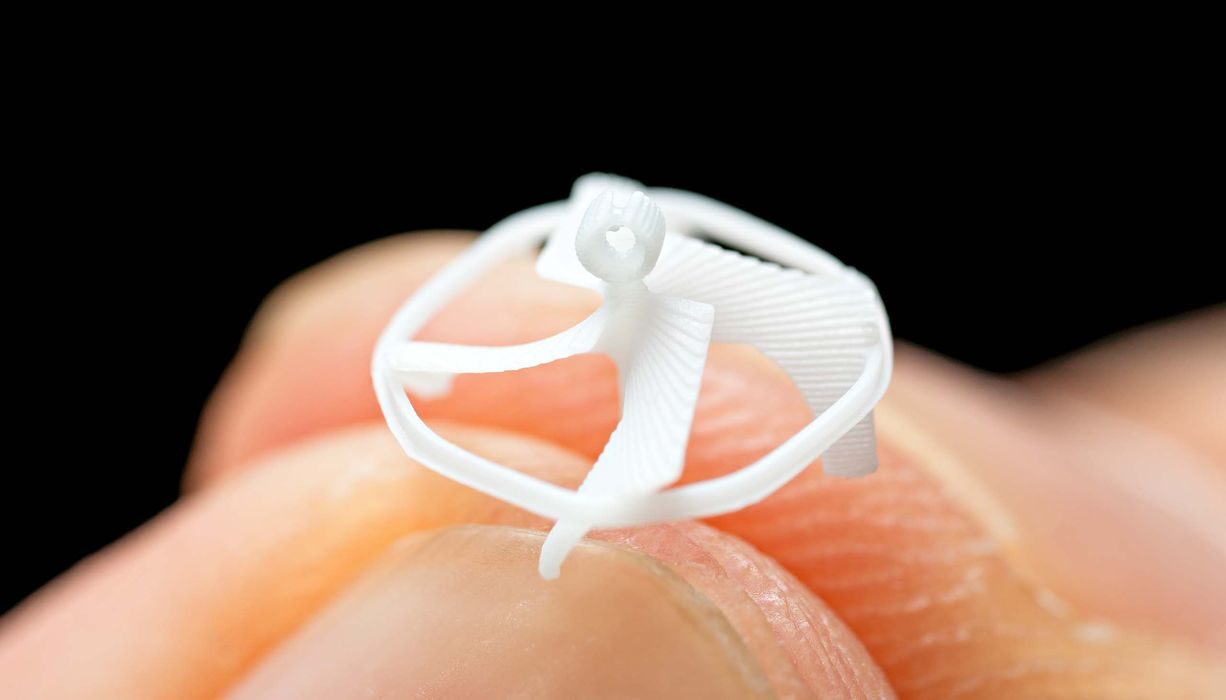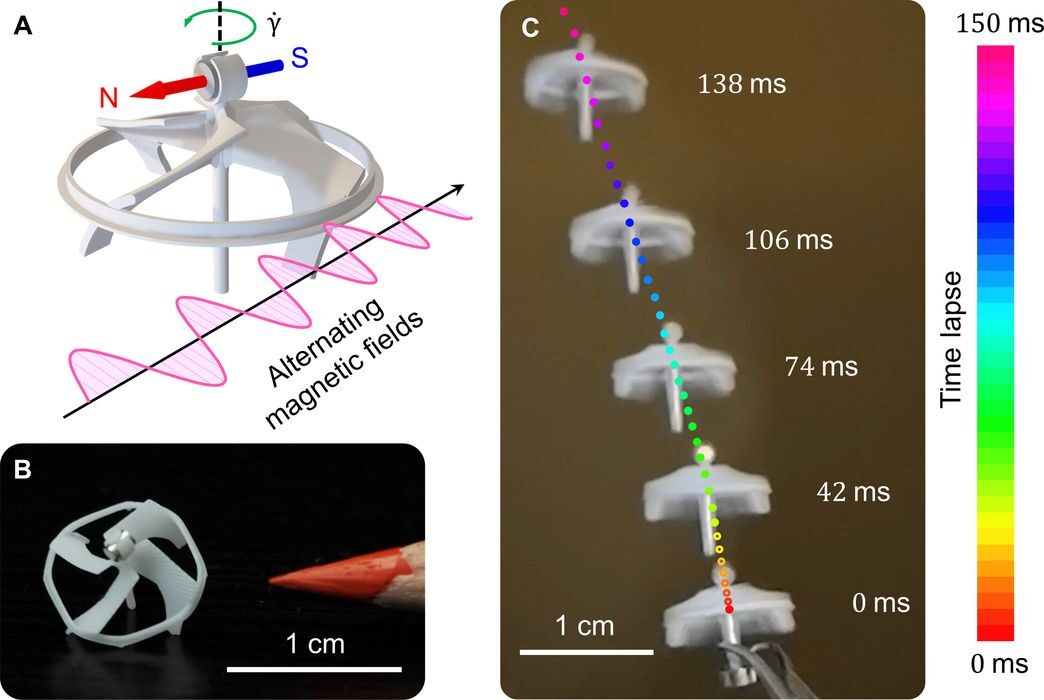
Researchers have developed an incredible 3D-printed flying robot that has no traditional motor.
The problem being addressed is that highly desirable miniature drones are not really feasible with current electric motor technology. The motors simply weigh too much, and that requires a minimum structural size to hold up that weight during flight.
Instead, the researcher took a very different approach to flying power. They used a single-axis alternating magnetic field, eliminating the need for onboard energy storage or external wires.
Here’s how it works: The robot has two tiny permanent magnets embedded in its body. When exposed to an alternating magnetic field (like a back-and-forth magnetic push along one axis), these magnets try to align themselves with the changing direction of the field. This behavior produces rotational motion due to magnetic torque.

The body of the robot, as you can see above, is basically a propeller with four blades. When it rotates, it provides lift.
The researchers were also able to demonstrate flight behaviors including hovering, route adjustment, and collision recovery — all without a motor and onboard electronics!
They use external magnetic fields for both propulsion and steering, enabling lightweight and precise control without onboard electronics, and a gyroscopic balance ring to enhance flight stability through rotational inertia.
The tiny device, weighing only 21 g, is even able to carry very small payloads.
This is apparently the smallest and lightest robot that achieved untethered controlled flight, and brings technology that much closer to “insect capability”.
Micro drones using this approach could prove to be a very large market, so this development could spur additional sales of micro fabrication 3D printers. There could also be entirely new applications enabled by this approach.
I can imagine several unusual applications that might include:
- Agricultural sensors with micro drones flying over fields
- New security systems that deploy micro drones to investigate detections
- Emergency services could use micro drones in disaster areas
- Multiple military applications
This research could end up generating quite a lot of activity.
Via Science Advances and UC Berkeley
